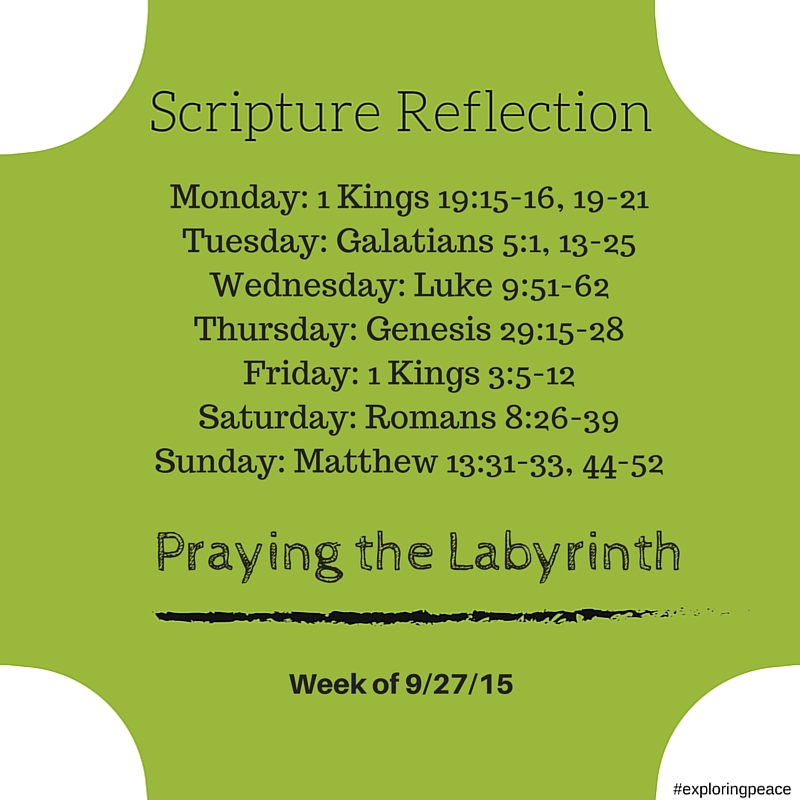|
Walking a labyrinth offers a sacred and stable space to focus your attention and listen to your soul. This ancient walking style of meditation is sometimes referred to as a prayer walk and can serve as a powerful tool for transformation. It's one of my favorite ways to pray (I say that a lot, don't I?!). If this style of praying is new to you and you live in the Nashville area, why not join me? This Thursday at noon, I'll be leading a labyrinth walk at Donelson Heights UMC. Click here to let me know you'll join me! What is a Labyrinth? For Millenia, pilgrimages to holy sites have been part of the Christian tradition. However, when a pilgrimage was not possible, the discipline of this spiritual journey was found on the labyrinth as a symbolic prayer walk. By walking the labyrinth today, we are rediscovering a long-forgotten tradition found in various traditions and forms around the world. While labyrinths have a history that can be traced back thousands of years, their beginning origin is unknown. No matter the style of the labyrinth, structurally, it has only one path so there are no tricks and no dead ends. The path winds throughout and becomes a mirror for where we are in our lives, each on a journey. Walk it with an open heart and mind as you allow God to touch your sorrows and release your joy, allowing your soul to sing. What a Labyrinth is Not? It is important to keep in mind that a labyrinth is not a maze. A maze is designed to confuse you, a cognitive puzzle (mazes only entered our world’s culture about 600 years ago). A labyrinth has only one path that leads to the center, designed to easily find your way making space for prayer and meditation. Why Walk the Labyrinth? The labyrinth offers a sacred and stable space to focus your attention and listen to your soul. It is a wonderful place to pray. However, the experience is different for everyone because each of us brings different raw material to the labyrinth. As with any spiritual discipline or prayer practice, we bring our unique beliefs, hopes, dreams, history, and longing of the soul. Leave behind what may not serve you as you journey toward union with God in quiet reflection. How Do I Walk the Labyrinth? Try to not have expectations, simply enter into the journey and use your senses to move your body forward in prayer. Before you walk, quiet your mind and become aware of your breath. Ground your feet and let go of any expectations. Simply have an open mind and do what feels natural. You may wish to choose a prayer, centering word, or phrase to avoid a wandering mind. Some find simply focusing on their breath helps them remain in the present. Allow yourself to find the pace your body wants to move forward (skip, dance, or walk very slowly). Those going in on the path will meet those coming out. You may "pass" people or step to your right and let others step around you. Do what feels natural. Afterward, you may wish to sit quietly and reflect, journal, create, or simply give thanks. You may find the following three stages helpful for your walk:
The above information was compiled from the research of Lauren Artress using her guides, "Walking A Sacred Path” and “A Sacred Path Companion” as well as the Grace Cathedral Website. If you've stumbled here for the first time, welcome! Since this summer, I've posted a short list of scriptures for weekly reflection as well as a different way to pray each week. Pray one scripture or pray them all, this is simply an invitation to journey deeper as we explore God's peace together through a variety of prayer styles.
And while this is the last week of this series, you can click here to discover more of the prayer practices we've explored together! Comments are closed.
|
Whitney R. SimpsonClick to connect: Categories
All
Content @ 2010-2023
Whitney R. Simpson Exploring Peace Ministries, LLC |


 RSS Feed
RSS Feed
